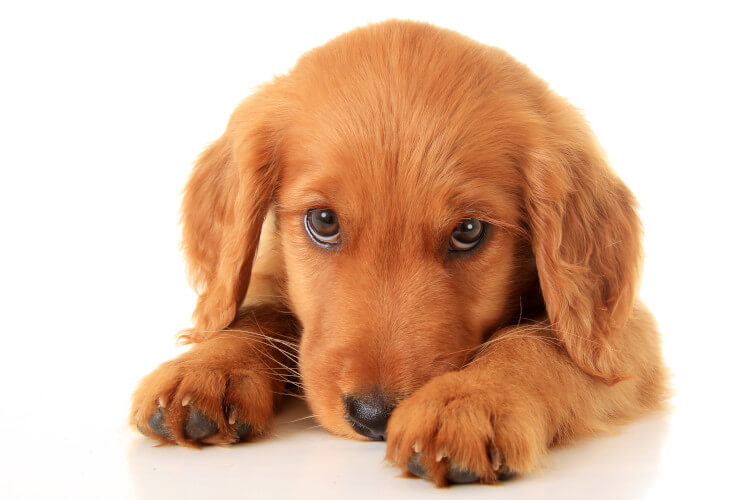
As a dog owner, you need to vaccinate your dog regularly. Since many vaccines are available, it may be confusing to decide which shots are necessary and optional. You should schedule a visit to your local vet to discuss the most appropriate shots as well as the vaccination schedule.
The core vaccines include hepatitis, rabies, parvo, parainfluenza, distemper, and Leptospirosis. These prevent respiratory attacks, viral infections, and bacterial attacks.
With these shots, your puppy is safe from life-threatening conditions. There are also non-core vaccines that can be administered based on age, lifestyle, and location.
What is Parvo?
Parvo is a highly contagious disease caused by canine parvovirus that attacks the gastrointestinal system of all dogs. However, it can also affect the heart muscle and bone marrow. In severe cases, death can occur within a few days after the onset of clinical signs in dogs or puppies.
Parvovirus is amazingly resistant and can withstand harsh conditions such as heat, cold, and humidity, and can survive in the environment for long periods.
How did your pet contract parvo?
Puppies can contract parvo through direct contact with an infected dog or indirect contact with a contaminated object. The infected stool of a dog is where a large portion of the virus exists.
Therefore, any unvaccinated dog that inhales becomes infected. Dog owners are encouraged to be careful as even trace amounts from an infected area is enough to infect other dogs.
Canine parvovirus is a worldwide occurrence that affects domestic dogs and other members of the canine family. Because of this, you find many incidences in animal shelters and pet stores.
This virus attacks dogs of any age, but severe infections are reported in puppies between 6 weeks to 4 months old. On average, PDSA hospitals see up to 1500 cases of parvo each year.
Survival Rate of Parvovirus in Dogs
Parvo can be a fatal disease if untreated. The survival rate stands at 68-92%. However, when aggressively treated, the survival rate stands at 5-20%.
However, about 80% of dogs do not show any signs of illness, and most die within 48-72 hours. The lack of symptoms and quick onset explains why the mortality rate is so high.
Signs and Symptoms of Parvo in a Puppy
When a puppy is infected, signs begin to show within six to ten days. The main symptoms include severe bloody diarrhea, vomiting, reduced appetite, severe weight loss, fever, and low energy.
The vomit may be clear or brownish-yellow in color, while diarrhea will be light yellow with blood. Due to severe diarrhea and vomiting, the puppy can become extremely dehydrated and die.
Additionally, constant vomiting can damage the intestines and immune system, which can lead to septic shock. In some puppies, they could also drool or foam around the mouth.
In another form of the virus that affects the heart, it causes the heart muscles to malfunction. At this point, your dogs’ heart might start beating rapidly, with the tissue becoming very red.
If the vet examines the abdominal area, your puppy might experience severe discomfort or pain.
Treatment for Parvo in Dogs and Puppies
There is no exact cure. However, keeping your dog hydrated and managing secondary symptoms can go a long way in fighting the illness.
There are two treatment options plans which include veterinary service and at-home care.

Veterinary services employ treatment plans such as intensive nursing that ensure you have a well-tended to and monitored dog. They are cleaned, fed, hydrated, and kept warm. They also distance the puppies from other dogs to prevent them from picking up any other type of infection.
The puppy is also given a fluid drip at the hospital, which replaces the fluid lost during diarrhea and vomiting. It is a quick way to replenish the liquids lost as the drip injects fluid directly into the bloodstream.
Another form of treatment plan used in hospitals includes antibiotics to prevent any secondary infections that might occur due to parvo.
Other medications are also administered, such as anti-sickness medication and ulcer medication which help to repair damaged intestines.
In the home treatment plan, make sure your puppy frequently drinks water to prevent dehydration. With a vet’s recommendation, ascertain that they eat small bland meals throughout the day to ensure they replenish the energy lost.
As a dog owner, you should keep your puppy away from other dogs to prevent them from contracting other infections. Finally, as per doctors’ instructions, administer probiotics and injectable vitamins to help rebuild your pup’s immune system.
How long does it take for a puppy to recover from parvo?
Symptoms will vary, and some dogs can take up to three weeks before they start to recover, while others only need a few days. Ensure that your dog has plenty of fluids and nourishment if it can keep anything down.
Please note that the below times are only guidelines and may vary from dog to dog.
0-4 Days
Affected puppies can show signs as early as within a day of being infected but usually show symptoms between days 2 and 4 after infection. They may have a high fever accompanied by weakness, depression, vomiting, and diarrhea, often bloody, lethargy, anorexia, and dehydration.
5-7 Days
The vomiting and diarrhea should start to moderate within two days after showing up, but there is still a high risk of your puppy relapsing, so keep an eye on them for any changes. In addition, your puppy may still show some loss of appetite, fever, lethargy, depression, and weakness.
8-11 Days
You will have a better idea of how your puppy is doing around day eight, as the symptoms from earlier should have disappeared by now. If not, you will see a lot more improvement during this period. However, depending on their situation, your pup may still feel some loss of appetite, fever, and lethargy.
12-15 Days
If your dog has made it to day 12 and there are still no signs of the virus, it is doubtful that any will show up in the following days. Your pup should be back to normal health, albeit a little exhausted from their ordeal, but fully capable of living a happy and healthy life again.
Please note that these are only guidelines. Your dog may take more or less time than this to recover.
How Will I Know My Pup is Out of the Danger Zone?
There are several signs to look out for that will let you know that your puppy is recovering from parvo.
The earliest sign is when they stop vomiting blood because the virus is no longer causing the intestines to bleed. At this point, they also stop foaming at the mouth.
Another sign that your dog is out of the woods is their eating habits go back to normal. They regain their appetite and can keep food down.
You can also tell that your dog may be on the way to survive parvo is when the color of their stool goes back to its regular color. This change is also a critical indicator that the intestines are healing as expected.
A final indicator that your dog is on the path to recovery is when their activity level increases and they can respond to calls and commands, unlike before.
Get Your Little Dog Vaccinated
Parvo is just one example of a disease that can quickly kill your dog without proper treatment and vaccination. It is therefore paramount that dog owners take out the time to visit a vet to discuss vaccination.
Vaccinating your dog helps you avoid expensive treatments for preventable diseases. It also reduces the risk of passing down diseases from animals to humans.
Once you put a vet schedule into place, it is essential to follow it to ensure that your puppy can fight the diseases whenever they come into contact with them.
It will also help build immunity from a young age and build up resistance to infections and diseases.


